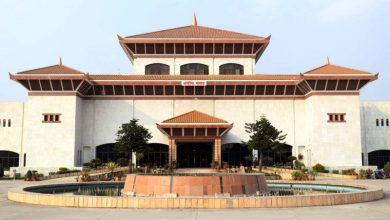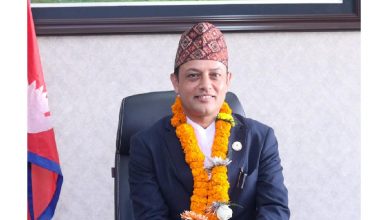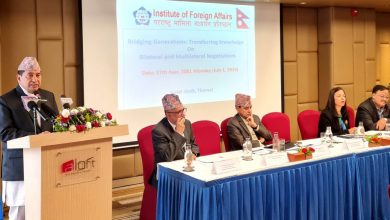Technology, a double-edged sword that warrants conscience use, say experts
Kathmandu: Stakeholders concerned have advised journalists to accurately use digital platforms, acknowledging their unavoidable influence in the information ecosystem.
Media trainer and senior journalist Prof. Dr. Ramkrishna Regmi said the growing influence of digital platforms in journalism has further narrowed this field, especially mass media.”Newsrooms are at unease because of the flow of information, misinformation and disinformation on social sites.”
He was speaking at a program organized here recently by the Working Women Journalists (WWJ), an organization of women journalists working in different forms of media in the country.
Means of mass communication are changing and we have no way than to accept this development and tackle it consciously. Amidst the increasing occupancy of social sites in the information ecosystem, journalists should build awareness about the proper handling of social sites. They should learn how to react and respond to social media content, and how to use them correctly in journalism, he added.
“Fact-checking is necessary when relying on any information from social sites, as they offer a convenient space for the flow of information and user-generated content,” he stressed.
According to Regmi, many things have changed in the information ecosystem: length, design, presentation, construction, access, and so on. With changing times and advanced IT innovations, the information consumers’ community has turned smart, and they aspire to have access to information at the tip of their fingers on a single device.
In his assessment, social sites are incredibly attractive to the public for information as well as for a daily dose of entertainment.
The professor stressed that however, amidst these changing contexts, it is the duty and responsibility of journalists to advocate for social transformation in society while tackling technology-induced challenges. They are expected to produce media content capable of addressing the roots of social, economic, cultural, and gender-based discriminations, coupled with structural disparities and stereotypical attitudes and mindsets, and bring a balance to society.
Senior journalist Nirmala Sharma said journalists should be aware of the nature of information and news supplied through social sites, and they have to develop skills to filter out the right information and news content amidst the ‘flood’ of content on social networking sites.
Defining social sites as sources of news, she insisted on the need to filter out accurate information before translating them into journalistic writing. “Authenticity and fact-checking must be ensured in such news contents.”
Technology: a double-edged sword
Sharing about the possible uses of social sites and Artificial Intelligence (AI) for journalistic purposes, media researcher Ujjwal Acharya said, “Technology is always a double-edged sword and its conscientious use is warranted for journalists.” His presentation focused on how journalists can use social networking sites and AI accurately to enhance their professional skills and performance.
As he said, the digital platform provides journalists with space to engage with the audience and readers, keep them updated with real-time news, and access a broader audience reach. Besides, it serves as a source of breaking news and trends and helps in building a professional profile, he added.
However, balancing human judgment with AI capabilities, dealing with misinformation and manipulation, managing online harassment and trolling, balancing speed and accuracy, avoiding spamming, and building relationships are its challenges.
Ethical considerations are vital when using social sites and AI for journalism. As he pointed out, maintaining journalistic integrity, respecting privacy and consent, avoiding sensationalism, ensuring transparency with the audience, avoiding biases in AI algorithms, and ensuring data security are points to be noted while using social sites and AI as supporting tools in practising journalism.
He added that even AI content can be biased as they are fed with contents and such possibility must be kept in mind while using it.
A section of the participants was concerned about the rising encroachment of social networking sites on journalism. Referring to their over two decades of journalism practice, they mentioned that their generation was allowed to enter this field only after building a foundation with the required training. They were mandated to dedicate time to learning reporting skills and generating news content.
“Now things are different; media is smart, and it has smart users who desire information at their fingertips. Now anyone can play a role in media at any time through multiple channels,” they bemoaned.
Before this, speaking at the inaugural session of the event chaired by WWJ Acting President Sangita Lama, Chief Guest Deputy Speaker of the House of Representatives, Indira Rana, urged journalists to focus on their professional performance and to ensure that the contents of journalism are untouched by fake news, misinformation, political favoritism, and prejudices. Terming journalists as fighters for democracy, she urged journalists to realize the implications of IT and the growing space of digital platforms and to make concise use of this situation.







Comments